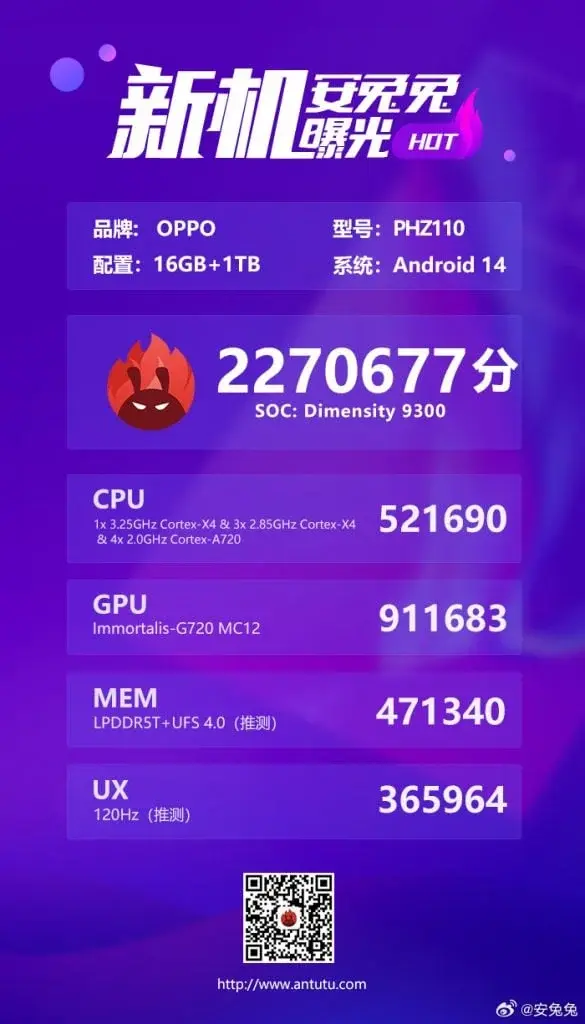Vivo recently unveiled the Vivo X100 and X100 Pro, the world's first smartphones to feature the Dimensity 9300 chip. Following suit, the Oppo Find X7 is rumored to be the next flagship phone to incorporate this powerful chipset. Although its official release is expected in Q1 2024, the Find X7, labeled as PHZ110, has already undergone benchmark testing on AnTuTu, providing insights into its specifications.
AnTuTu Performance
According to the AnTuTu listing, the Find X7 achieved an impressive score of 2,270,677. The device scored 521,690 points on the CPU test, 911,683 points on the GPU test, 471,340 points on the memory test, and 365,964 points on the UX test. These results demonstrate the Find X7's exceptional performance capabilities.
Key Specifications
The AnTuTu listing also reveals several key specifications of the Find X7. The device will feature a 120Hz refresh rate display, the Dimensity 9300 chipset, 16 GB of LPDDR5T RAM, and 1 TB of UFS 4.0 storage. Running on Android 14 with ColorOS 14 layered on top, the Find X7 promises a seamless user experience.
Geekbench Results
Prior to the AnTuTu listing, the PHZ110 Find X7 had already made an appearance on Geekbench. The device achieved a single-core test score of 2139 and a multi-core test score of 7110. These results further solidify the Find X7's high-performance capabilities.
Exclusive Features
Oppo has officially confirmed that the Find X7 series will introduce HyperTone camera optimizations and satellite connectivity. Additionally, the Find X7 Pro, anticipated to launch alongside the Find X7, will be equipped with the Snapdragon 8 Gen 3 chipset. Notably, the Pro model will feature Sony's new 1-inch LYT-900 camera sensor, enhancing its photography capabilities.
With its powerful Dimensity 9300 chip, impressive benchmark scores, and exclusive features, the Oppo Find X7 is shaping up to be a highly anticipated flagship smartphone. Smartphone enthusiasts can look forward to its release in Q1 2024, eager to experience its exceptional performance and innovative technologies.


Leave a Reply